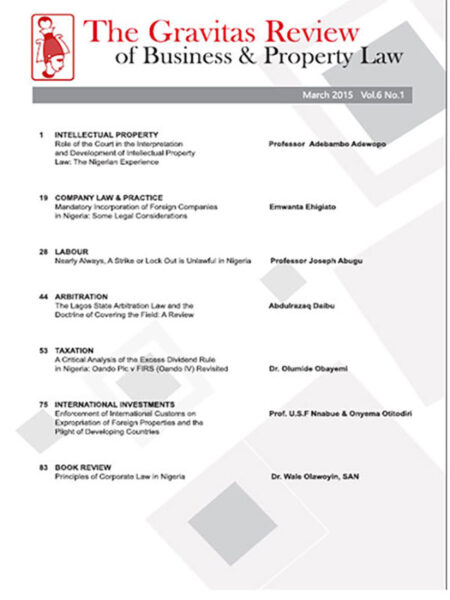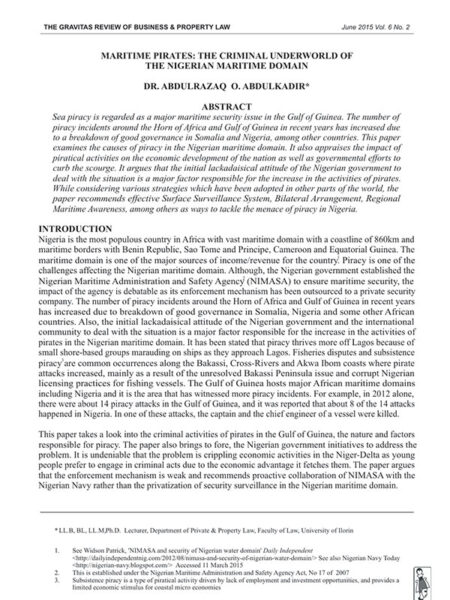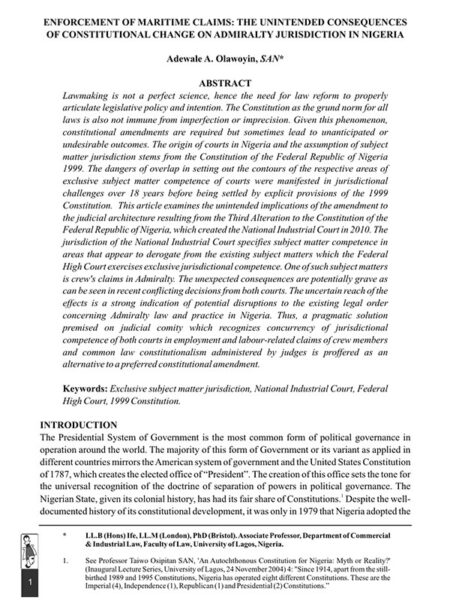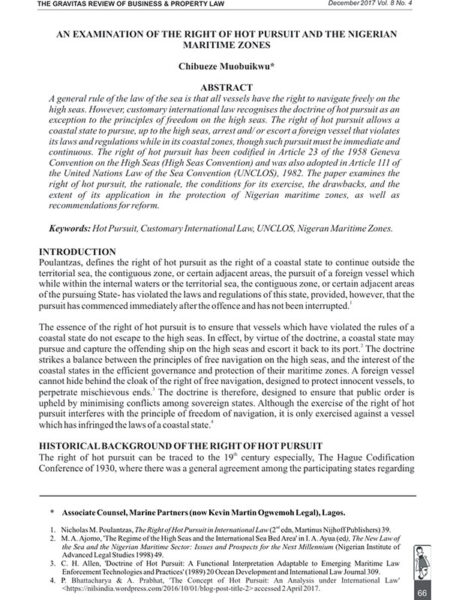Description
ABSTRACT
Revisiting MT Eyuwa vs. Inspector General of Police: The Imposition of “Juridical Personality” on a Ship – A Shibboleth?
Damilola I. Osinuga*
To be a legal person is to have rights and responsibilities, to grant legal rights or impose legal obligations. While there is minimal disagreement as to whether a human or a corporation has legal personality, the question of whether a vessel possesses legal personality is still controversial. Admiralty law, one of the oldest areas of law, has acquired peculiar and distinguishing characteristics that set it apart from other areas. One of these qualities stems from the fact that a claim can be commenced by filing an action against a vessel. This could have led to the misconception that a vessel had a legal personality. This article investigates the legal grounds for the recent Nigerian court ruling that a ship has a legal personality. The article suggests that the appellate court may have misunderstood the concept of a vessel’s legal personality.
Keywords: Juristic Personality, Ships, Personification and Admiralty
A ship is born when she is launched and lives so long as her identity is preserved. Prior to her launching she is a mere congeries of wood and iron-an ordinary piece of personal property -as distinctly a land structure as a house, and subject only to mechanics’ liens created by state law and enforcible in the state courts. In the baptism of launching she receives her name, and from the moment her keel touches the water she is transformed, and becomes a subject of admiralty jurisdiction. She acquires a personality of her own; becomes competent to contract, and is individually liable f or her obligations, upon which she may sue in the name of her owner, and be sued in her own name. Her owner’s agents may not be her agents and her agents may not be her owner’s agents. She is capable, too, of committing a tort, and is responsible in damages therefor. She may also become a quasi bankrupt; may be sold for the payment of her debts, and thereby receive a complete discharge from all prior liens, with liberty to begin a new life, contract further obligations and perhaps be subjected to a second sale.1
INTRODUCTION
The Code of Hammurabi, which is believed to have been compiled between the years 2000 and 1600 B.C. and contains allusions to maritime law, is the earliest book of legislation that has survived to the present day. However, rather than discussing the history of maritime law, this section of the article will focus on the history of admiralty law2 as this is more crucial to this article.
*Ph.d, Managing Partner, Damilola Osinuga, LP.
- Tucker v Alexandroff, 183 U.S. 424, 438 (1902) (Brown, J.)
- Historically, the distinction between admiralty law and maritime law was that admiralty law was restricted to disputes involving torts and contracts on the high seas. Maritime law expanded over time to encompass all other forms of legal disputes arising on the high seas and other navigable waters









Reviews
There are no reviews yet.